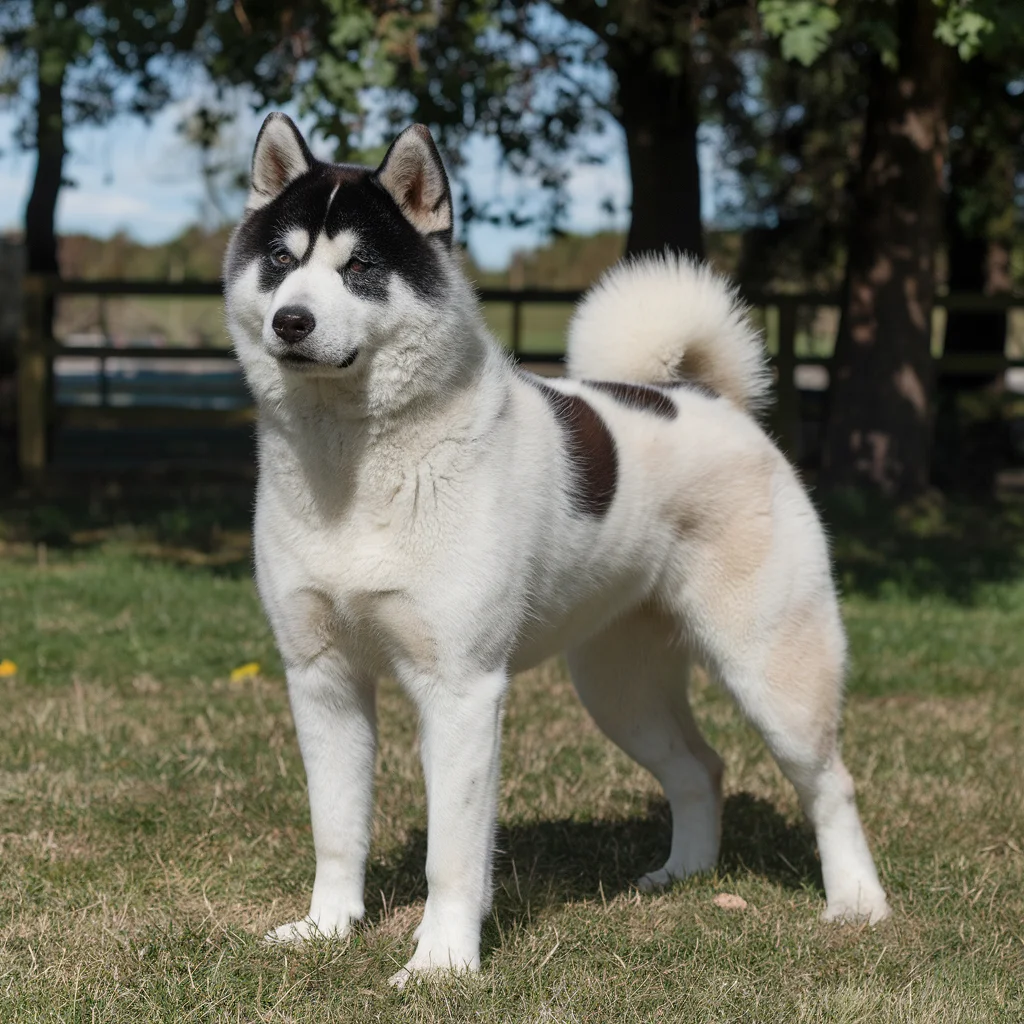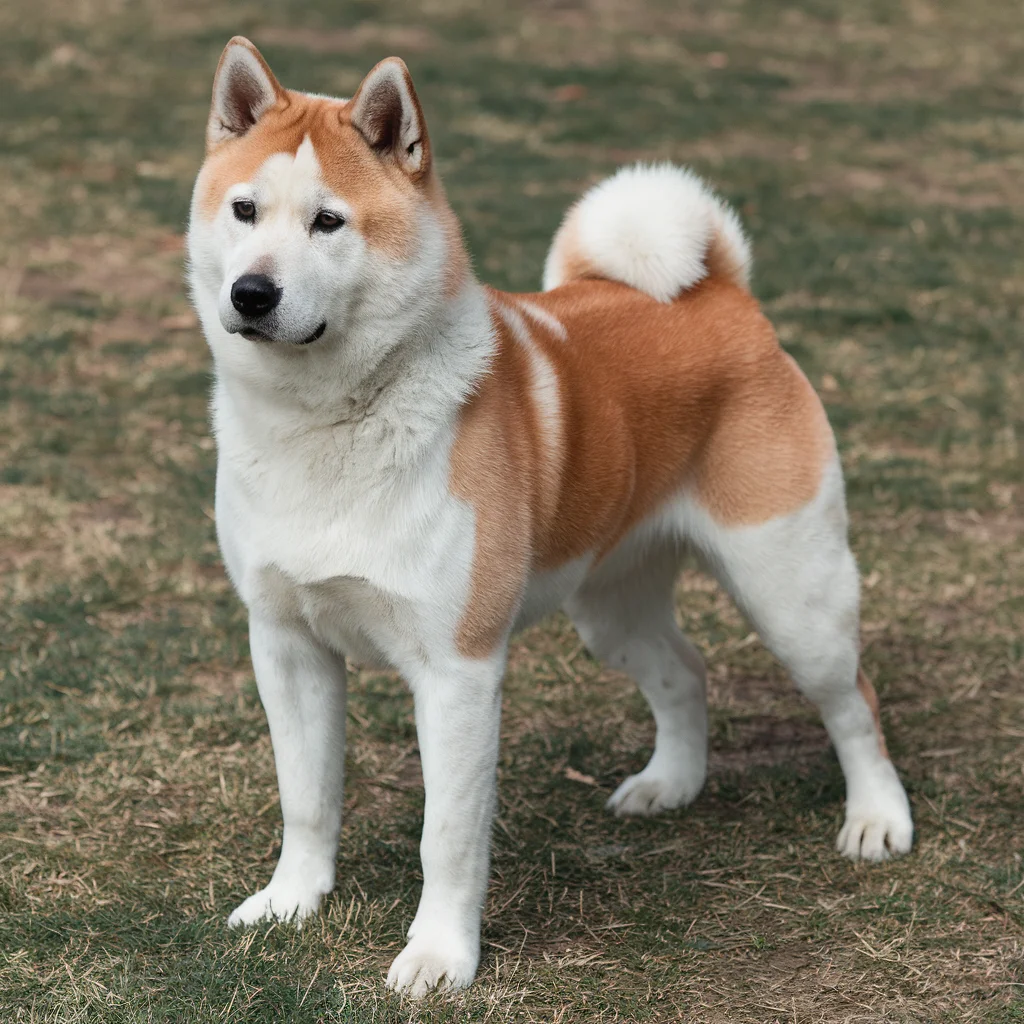When it comes to choosing a dog, particularly an Akita, potential owners often face the dilemma of selecting between a male and a female.
Both genders possess unique traits that can significantly influence your experience as a pet owner.
This blog post dives deep into the Akita breed, highlighting differences between male and female Akitas, their personalities, training methods, health considerations, and more.
With thorough insights, you’ll be equipped to make the best choice for your lifestyle and preferences.
Understanding The Akita Breed 🐕

The Akita breed hails from Japan, where it was originally used for hunting and guarding. Known for their strength, loyalty, and dignified demeanor, Akitas make excellent companions and family pets. They possess a robust build, a thick double coat, and a proud stance, making them both impressive and imposing.
Key Characteristics of Akitas:
- Size: Males typically weigh between 100 to 130 pounds, while females range from 70 to 100 pounds.
- Lifespan: The average lifespan of an Akita is about 10 to 15 years.
- Temperament: They are known for their loyalty, intelligence, and independent nature.
Understanding these characteristics is crucial when deciding between a male and female Akita, as it helps set expectations for training, care, and companionship.
Male vs. Female Akita: A Quick Comparison ⚖️
Choosing between a male and female Akita involves examining various factors such as physical attributes, behavior, and training requirements. Below is a quick comparison table to highlight these differences.
| Feature | Male Akita | Female Akita |
| Size | Larger and heavier | Smaller and lighter |
| Temperament | More dominant | Generally more nurturing |
| Training Challenges | Stubbornness | More eager to please |
| Exercise Needs | High | Moderate to high |
| Grooming | Requires regular care | Similar grooming needs |
Understanding these attributes helps prospective owners tailor their choice to their home environment and lifestyle.
Male Akita Personality Traits 🧔♂️

Male Akitas are often characterized by their boldness and protective nature. They tend to form strong bonds with their families, displaying a natural instinct to guard and protect. However, this loyalty can sometimes manifest as territorial behavior, which requires early training and socialization.
Typical Traits of Male Akitas:
- Protective: Males often take on a guardian role, making them excellent watchdogs.
- Dominant: This can lead to challenges during training if not addressed early on.
- Affectionate: Despite their strong nature, they can be incredibly loving with their families.
Training Male Akitas
Training a male Akita requires a firm, consistent approach. Due to their dominant personality, positive reinforcement techniques work best. Establishing yourself as the leader helps mitigate stubbornness and ensures a well-behaved dog.
Tips for Training Male Akitas:
- Start Early: Begin training as soon as you bring your Akita home.
- Socialize: Expose your dog to various environments, people, and other animals.
- Positive Reinforcement: Reward good behavior with treats or praise.
Incorporating these strategies will help cultivate a well-adjusted male Akita.
Female Akita Personality Traits 👩🦰

Female Akitas are often described as nurturing and more sensitive than their male counterparts. While they can be just as protective, their demeanor tends to be gentler, making them excellent companions, especially for families.
Typical Traits of Female Akitas:
- Independent: Females may show more self-sufficiency and less dependency on their owners.
- Nurturing: They often bond closely with children and other pets.
- Less Dominant: Generally, females are easier to train and manage.
Training Female Akitas
Training female Akitas tends to be a more straightforward process. They typically respond better to commands and are often more willing to please their owners.
Tips for Training Female Akitas:
- Consistency is Key: Establish a routine for training sessions.
- Positive Reinforcement: Use treats and affection as rewards.
- Encourage Socialization: Similar to males, early socialization is crucial.
These techniques will foster a trusting relationship and a well-behaved female Akita.
Health & Care: Male Akitas 🏥
Maintaining the health of a male Akita involves regular veterinary check-ups and awareness of specific health concerns that may arise.
Common Health Issues:
- Hip Dysplasia: A genetic condition where the hip joint doesn’t fit into the hip socket properly, leading to arthritis.
- Hypothyroidism: A condition where the body does not produce enough thyroid hormone.
- Autoimmune Disorders: Males can be prone to certain autoimmune diseases affecting various body systems.
Grooming and Care Needs:
- Coat Care: Regular brushing is essential to manage shedding.
- Diet: Provide a balanced diet suited to their size and activity level.
Being proactive about health care can significantly enhance your male Akita’s quality of life.
Health & Care: Female Akitas 💅
Female Akitas also face unique health considerations. Understanding these can help owners provide the best care possible.
Common Health Issues:
- Pyometra: A serious uterine infection that can occur in unspayed females.
- Hormone-Related Conditions: Hormonal changes can lead to weight gain and mood swings.
- Joint Problems: Females are also susceptible to hip dysplasia and other joint issues.
Grooming and Care Needs:
- Grooming: Regular brushing helps manage their thick coat, especially during shedding seasons.
- Nutrition: Proper nutrition is critical to maintaining a healthy weight and overall wellness.
Taking these health considerations into account will help ensure a long, happy life for female Akitas.
Breeding Considerations: Male Akitas 🐾
If you’re considering breeding your male Akita, there are several factors to keep in mind.
Male Reproductive Health:
- Sperm Quality: Ensure your male is healthy and free from genetic disorders before breeding.
- Behavior During Mating: Males can sometimes be aggressive; proper introductions to females are crucial.
Preparing for Breeding:
- Health Checks: Regular veterinary exams are vital to ensure breeding suitability.
- Environment: Create a calm, comfortable space for mating.
Being prepared will help streamline the breeding process and ensure healthier puppies.
Breeding Considerations: Female Akitas 🐾
Breeding female Akitas requires a careful approach to ensure the health of both the mother and the puppies.
Female Reproductive Health:
- Heat Cycles: Understanding the female’s heat cycle is essential for successful breeding.
- Pregnancy Care: Provide excellent nutrition and regular veterinary care throughout pregnancy.
Special Care Needed:
- Whelping Environment: Create a safe, quiet area for the female to give birth.
- Post-Pregnancy Care: Monitor the mother’s health closely after giving birth.
By understanding these breeding factors, you can help ensure the health and safety of both the female Akita and her puppies.
Akita Temperament Challenges: Aggression, Loyalty & Socialization ⚖️
Both male and female Akitas can exhibit challenging behaviors if not properly socialized. Understanding their temperament is essential for successful ownership.
Aggression Issues:
- Potential Triggers: Male Akitas may show aggression due to territorial instincts, while females might be protective of their family.
- Prevention Strategies: Early socialization and training can help mitigate aggression.
Loyalty Factor:
- Strong Bonds: Akitas are known for their loyalty, which can be both a blessing and a challenge.
- Dependable Companionship: They make excellent family pets, often forming strong attachments to their owners.
Importance of Socialization:
- Introducing New Experiences: Ensure your Akita is exposed to various environments, people, and pets from a young age.
- Ongoing Training: Regular training sessions and socialization will help reinforce good behavior.
By addressing these temperament challenges early on, you can foster a loving and well-adjusted Akita.
Which Gender is Best for You? 🔍
When deciding between a male or female Akita, consider your lifestyle, living situation, and personal preferences. Here are some factors to keep in mind:
Factors to Consider:
- Living Space: Larger homes may suit male Akitas, while females might adapt better to smaller spaces.
- Family Dynamics: Families with young children might benefit from the nurturing traits of a female.
- Training Experience: First-time dog owners may find female Akitas easier to train.
Pros and Cons of Each Gender:
- Male Akitas:
- Pros: Strong protector, larger size.
- Cons: Stubborn, potential aggression.
- Female Akitas:
- Pros: Easier to train, more nurturing.
- Cons: Can be independent, may require special care during heat.
Taking the time to evaluate these factors will help you choose the gender that best fits your lifestyle and family dynamics.
Conclusion: Male vs. Female Akita – The Final Verdict 🏆
In the debate of male vs. female Akitas, it’s essential to recognize that both genders possess unique qualities. Males are often protective and bold, while females tend to be nurturing and easier to train.
Your choice should ultimately depend on your personal preferences, lifestyle, and family dynamics.












